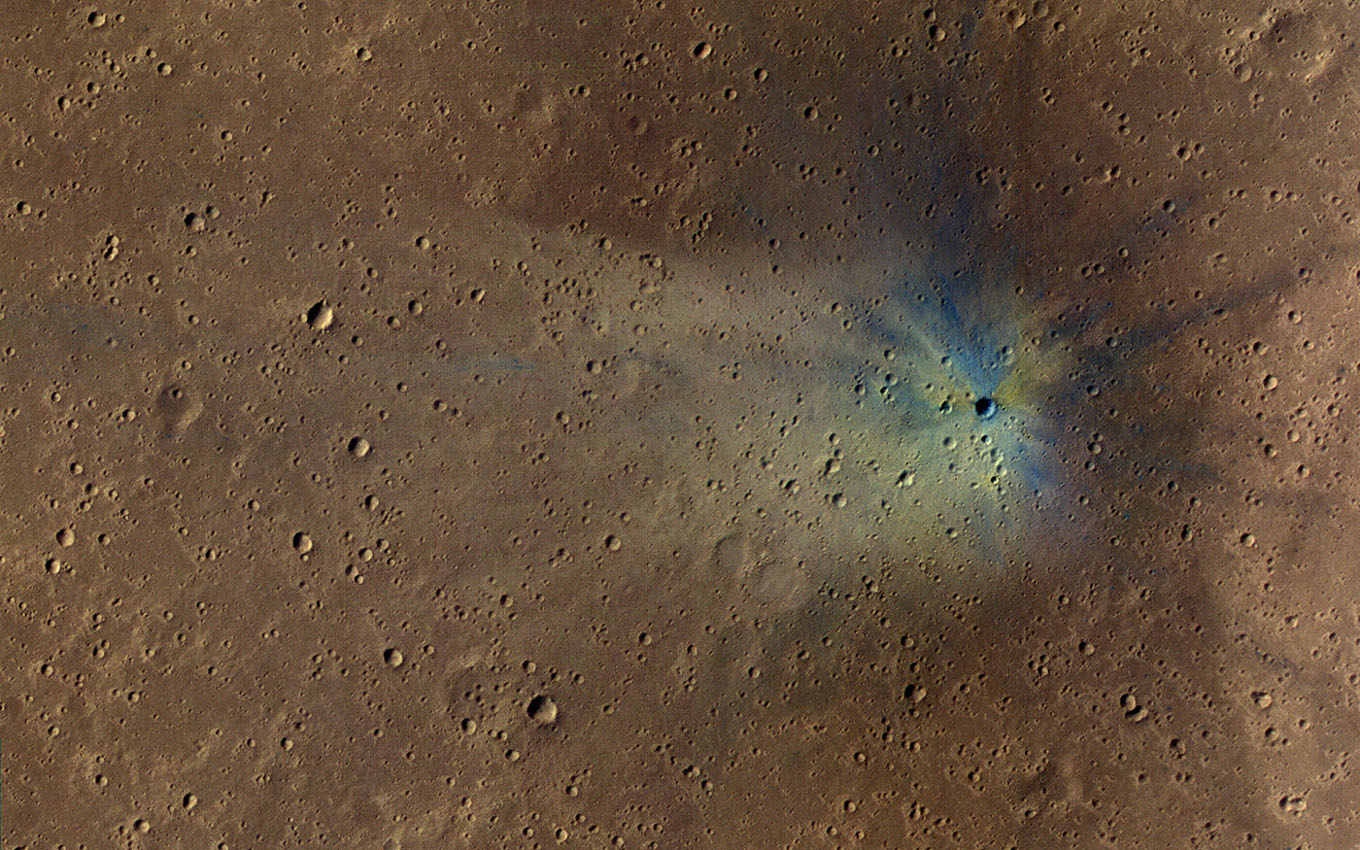Images
A New Impact Crater

May 29, 2018
Map Projected Browse Image
Click on image for larger version
The map is projected here at a scale of 25 centimeters (9.8 inches) per pixel.
[The original image scale is 27.8 centimeters (10.9 inches) per pixel (with 1 x 1 binning) to 55.5 cm/pixel (21.9 inches) per pixel (with 2 x 2 binning).] North is up.
NASA's Mars Reconnaissance Orbiter (MRO) keeps finding new impact sites on Mars. This one occurred within the dense secondary crater field of Corinto Crater, to the north-northeast.
The new crater and its ejecta have distinctive color patterns. Once the colors have faded in a few decades, this new crater will still be distinctive compared to the secondaries by having a deeper cavity compared to its diameter.
This is a stereo pair with ESP_054035_1915.
The University of Arizona, Tucson, operates HiRISE, which was built by Ball Aerospace & Technologies Corp., Boulder, Colorado. NASA's Jet Propulsion Laboratory, a division of Caltech in Pasadena, California, manages the Mars Reconnaissance Orbiter Project for NASA's Science Mission Directorate, Washington.
Credits
NASA/JPL-Caltech/Univ. of Arizona


